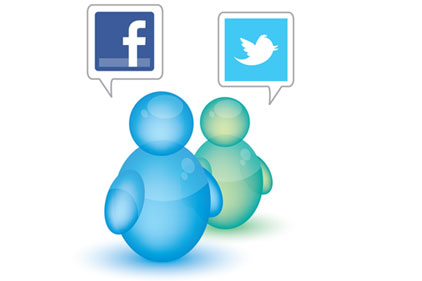
|
It is hard to imagine any market sector today that is not impacted by the “Big Three” emerging technologies: Social Media, Mobility and Cloud Computing.
The holiday shopping season saw “Cyber Monday” come out of nowhere to replace “Black Friday” as a traditional benchmark for consumer spending. New media and technology are being rapidly indoctrinated into our culture. Retail has embraced “social media” word-of-mouth marketing, and the technical innovations of mobile devices make e-commerce impulse buys all the more handy. And scaling IT operations is not an issue, as large retailers simply contract for more “seasonally expanded” cloud services, rather than purchasing costly computing equipment and hiring additional personnel.
The retail sector is one example that is inundated with real-time consumer information, predictive in its operational response to “Big Data,” and reliant upon the latest in cultural trends and technology for a competitive advantage. The physical security industry counts retail as a significant customer segment and could learn a valuable lesson in social media leverage to expand sales opportunities.
The retail sector integrates information to determine buying habits in real time. The classic “Pop Tart” case study is the perfect illustration. Real-time weather prediction integrates with online inventory management to order additional “bad weather supplies,” including “Pop Tarts.” Prepare a disaster area with critical supplies and generate additional revenues. The “Pop Tart” example utilizes business intelligence for competitive advantage. Two adjacent markets in the process of leveraging social media and technology for advantage are law enforcement and national security. Data analysis is being utilized to predict security scenarios. Incorporating social media into existing solutions is a consulting and integration business model. This extends account control, increases revenues and opens up new account business.
The trends that matter tend to “trickle down.” The institutions you would expect to pay attention to these major trends actually are paying attention. The issue that the security professional must come to terms with is a traditional slow response to market change. Being overly “conservative” in an age where technology is a rapidly integrated “commodity” will mean lost business opportunities, or perhaps even cost lives.
Will our physical security industry choose to embrace social media and mobility? Or will we incorrectly believe that these fundamental cultural and technical changes do not impact our business models?
The New World Order
While holiday retail shopping is something we all can readily identify with, there are much deeper, global changes taking place as a result of social media and mobility that are empowering the masses in ways never seen before. The constant news cycle is similar to the explosion of Big Data in our lives. We are drinking from a fire hose of digital information and unable to keep pace. Step back and look at the changes occurring in the Middle East, and specifically, the Arab Spring. The region of the world that secures a major source of the global energy supply is in upheaval. Long-held political structures are crumbling in record time and being replaced with a mass movement of people demanding more freedom. These governments simply cannot stop the Facebook/Twitter movement.
However, the same positive aspects of social media we see promoting democracy are being utilized by international criminal organizations, including drug cartels, to advance their nefarious goals. Technology is accelerating an international crime wave that is both physical and digital (cyber) in nature.
“Globalization has created a huge criminal economy that boosts a technically leveraged global supply chain. The value of that illicit economy is between 2-3 trillion dollars per year and is growing at seven times the rate of legitimate world trade.”
— Moises Naim
Former Venezuelan Minister of Trade & Industry. He is an internationally renowned expert on globalization, international politics and economics.
We must utilize these emerging technologies to reduce crime and counter these global trends. Yet, one of the gating factors in our ambitious pursuits is our own “security culture,” which is not recognizing the rapid advancements in communication via social media. The springboard of this change and the framework of an emerging security solution model is social media and mobility.
Local Law Enforcement
Law enforcement is taking a page from the social media playbook to better interface with the public by improving traditional community outreach methods. The year 2010 saw the inaugural conference for SMILE (Social Media In Law Enforcement) take place in Washington, DC, highlighting advances in digital wanted posters, community information sharing via Twitter feed posts and pursuing criminals in social space. Eventually, innovative police departments anticipate integrating Twitter feeds into a real time 9-1-1 monitoring center to improve the early warning system for accident or incident alerts.
COMPSTAT, originated in NYPD with former Chief Bill Bratton, is now an internationally acclaimed command accountability system that uses computer-mapping technology and timely crime analysis to target emerging crime patterns and coordinate police response. “Cops on Dots” was the “slang” explanation, as computer technology replaced traditional colored pushpins on wall maps. Today, the LAFD (Los Angeles Fire Department) responds to real-time tweets from homeowners during fire rescue operations in which wind changes occur almost instantaneously. Direct tweets are a time improvement over traditional landline communications to a dispatcher. These law enforcement solutions using social media are available to security operations within a public sector or private enterprise.
A valuable resource is ConnectedCOPS.net, the law enforcement’s partner on the social web, (http://www.connectedcops.net). The site is content rich with information on current topics in social media and cloud computing, as well as industry news and events. One article, titled “6 Reasons Why LEOs Should be Thankful for Social Media” by Lauri Stevens, asked Twitter followers why they are thankful for social media in law enforcement. The answers included:
1. It helps dissolve the media filter.
2. It increases your efficiency when budgets are tight.
3. It’s a great help in investigations.
4. It’s an ideal enhancement for community policing.
5. It’s an effective way to educate people, even officers.
6. It can save lives.
This information highlights how social media can provide a valuable addition to an existing security operation and/or policy.
The Intelligence Community
Throughout our nation’s history our intelligence community has been an early adopter of technology to identify emerging global trends. Certainly, tracking “Big” data analytics via social media and mobility trends has played a huge part in their efforts. The Associated Press has written “Ninja Librarians’ scour social media for CIA.” In the agency’s Open Source Center, these teams search social media sites like Facebook and Internet chat rooms, along with the traditional media venues of television, radio and newspapers to cross reference information looking for threats to the nation. Upwards of 5 million tweets are reviewed daily across a number of foreign dialects. Social media can be utilized to predict behavior. These tools exist today.
Our U.K. allies across the pond, The Metropolitan Police, initiated a social media effort “post” London rioting with photographs and disorder videos asking for the public’s help in identifying violent and criminal acts. The anonymous crime stopper effort dubbed “Operation Withern” resulted in more than 500 hundred arrests in the first three days. (http://www.securitymanagement.com/)
The Future Security Enterprise
Our industry must leverage these technologies to harden global supply chains, predict or respond to criminal behavior and otherwise better secure the business operations of a company or the critical infrastructures of a nation. Our global security hangs in the balance.
Social media, enabled by mobile devices and supported by Big Data analytics, is a powerful combination in the emerging market for behavioral profiling. In marketing circles, test beds and traditional research surveys are out, replaced by tweets and the blogosphere that offer instantaneous results. Today, movie releases are determined a box office success or failure based on social media activity “prior” to the actual premiere ever running in a theater. It’s predictive behavior via social mass media. It considers social media a dual-use technology.
The behavior we are modeling today does not have to be “human only,” but includes machine activities, as in how a network is responding (or not responding) to a cyber attack, or employees downloading confidential data. From social media to computer logs, behavior is predictable and “anomalies” are “Big” Red Flags. The fact is that behavior modeling has value in a security practice.
The future opportunity is obvious for our industry to use social media, mobility and the cloud. The unshakable fact is that the combination of these trends is rapidly changing our world. They have driven our personal behavior, reshaped global crime and law enforcement and totally surprised the international community by toppling established governments. We are witnessing the “socialization of technology” and entering a new, faster dimension. Innovative security integrators recognize the obvious and respond with products and services to keep pace and increase revenues. Mega change requires a flexible business model. As baseball great Yogi Berra said, “The future ain’t what it used to be.






